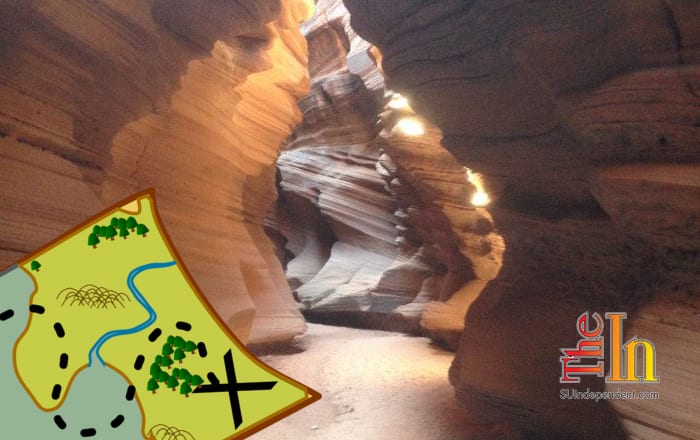
Hiking Southern Utah: Buckskin Gulch
Trail: Buckskin Gulch via Wire Pass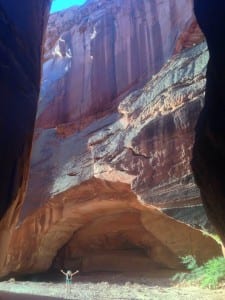
Location: Paria Canyon
Difficulty: Easy to difficult. Depending on the condition of the canyon, you may need rope to navigate a boulder problem and climb down, or you may have to wade through pools. I did not encounter either of these scenarios; however, canyons are ever-changing and you should be prepared. Some suggest taking a 50-foot rope, harness, and rappel device, just in case, and a dry bag is also recommended.
Distance: 21 miles, 13 miles of slot canyon and 7 miles through the Paria Canyon
Average time: 10 hours to 2 days
Total elevation: From Wire Pass to the Buckskin/Paria confluence, there is a 760-foot loss. From the confluence to Whitehouse, there is a 180-foot gain.
Kid/family friendly: Children with endurance would be able to do this hike. I would suggest backpacking and camping overnight for them so that you would be able to take your time.
Permit required: Call the Kanab Field office at (435) 688-3200 for more information.
Getting there: Shuttle setup is required. First, you will need to set up your shuttle. The trail end is at Whitehouse Campground. This is where you will drop off your vehicle. From Kanab, drive 40 miles east on U.S. Route 89. After traveling a little less than half a mile, turn right after crossing the Paria River, and head towards the BLM Paria River Contact Station. Follow this road for 2.5 miles to the Whitehouse Campground and parking area. Leave your vehicle here. Drive back to US-89 and drive 4.5 miles back towards Kanab. Just after a right-bearing curve guarded by a rail, House Rock Valley Road will be on the south side of the highway. Turn left and drive 8.5 miles to the Wire Pass Trailhead.
The trail: Stretching for 13 miles, Buckskin Gulch is one of the world’s longest slot canyons. It rarely exceeds 20 feet in width and offers towering cliffs, cave-like slots, and an open, thinly forested area that resembles a bird sanctuary. In places, the winding canyon reminded me of a funhouse at the fair where the trail was unassuming, looking as if it would just end and I didn’t know if it would turn left or right.
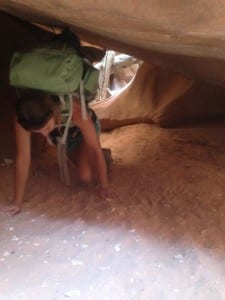 I was lucky enough to see two young owls swoop by me as I hiked. One landed and allowed me to “visit” with it for a peaceful moment. This canyon is full of treasures to be discovered.
I was lucky enough to see two young owls swoop by me as I hiked. One landed and allowed me to “visit” with it for a peaceful moment. This canyon is full of treasures to be discovered.
To safely enjoy the amusement of this remarkable canyon, please check the weather. If there is any chance of precipitation, please consider postponing your trip. Buckskin Gulch is one of the most dangerous canyons because it is so long and narrow: if it were to rain, deadly flash floods could occur.
From the Wire Pass parking area, walk across the road and down the trail to the register, then continue on the beaten path heading east. You will pass a sign that directs hikers to the Wave. Do not go up that trail. Soon the canyon will narrow and then open up again. At 1.75 miles, you will reach the Buckskin Gulch confluence. Here, you will find petroglyphs at the base of a large alcove on the right.
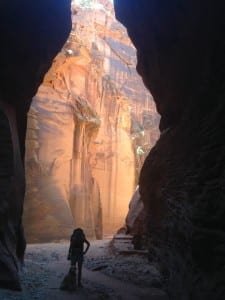 A little over six miles from the confluence, you will encounter the Middle Exit Trail on the left side of the canyon. You may choose to scamper up this trail to see more petroglyphs. After doing so, return to the canyon floor. This is a good place to turnaround and head back the way you came. From here, it is eight miles back to the Wire Pass parking area.
A little over six miles from the confluence, you will encounter the Middle Exit Trail on the left side of the canyon. You may choose to scamper up this trail to see more petroglyphs. After doing so, return to the canyon floor. This is a good place to turnaround and head back the way you came. From here, it is eight miles back to the Wire Pass parking area.
Four miles down the canyon from this point, you will reach a boulder problem. Study it and pick the safest way through.
Approximately one mile farther, you will reach the campsites and Paria Canyon confluence. Set up camp and enjoy your stay. Notice the stars between the canyon walls at night.
You will exit through the Paria Canyon. I suggest leaving camp early morning, even at sun-up, for this stretch of the hike during summer months. Unlike Buckskin Gulch, it is mostly in the sun and can get very hot.
As always, pack a camera, plenty of water, and food. Most of Buckskin Gulch is in the shade, making it a great hike for summer months; but the exit through Paria Canyon is in the sun, so try to do this part of the hike early in the morning after camping at the confluence. It is a great hike for late spring and early fall, too.



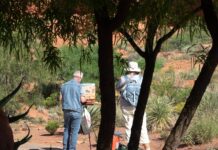
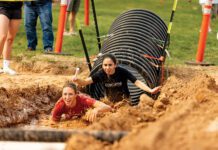
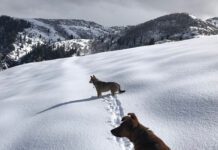
Just remember. During possible monsoons you don’t want to be flushed from these narrow canyons.
Watch a cement crew pouring concrete to get an idea how those logs jammed well above your heads got jammed there. I repeat, Jammed way above your heads.